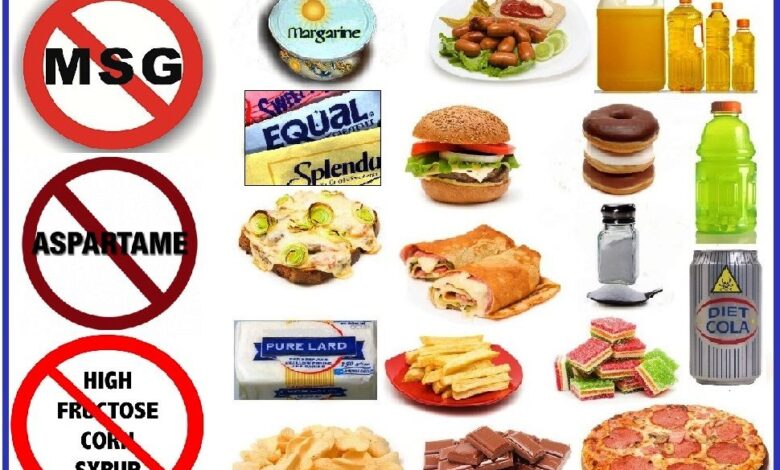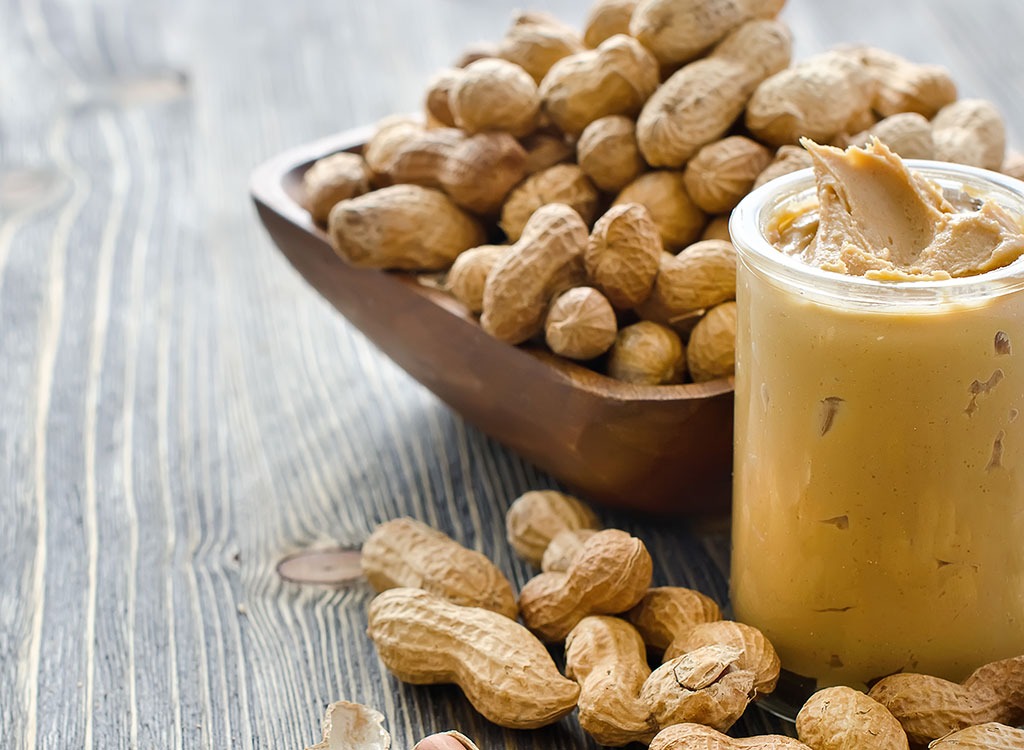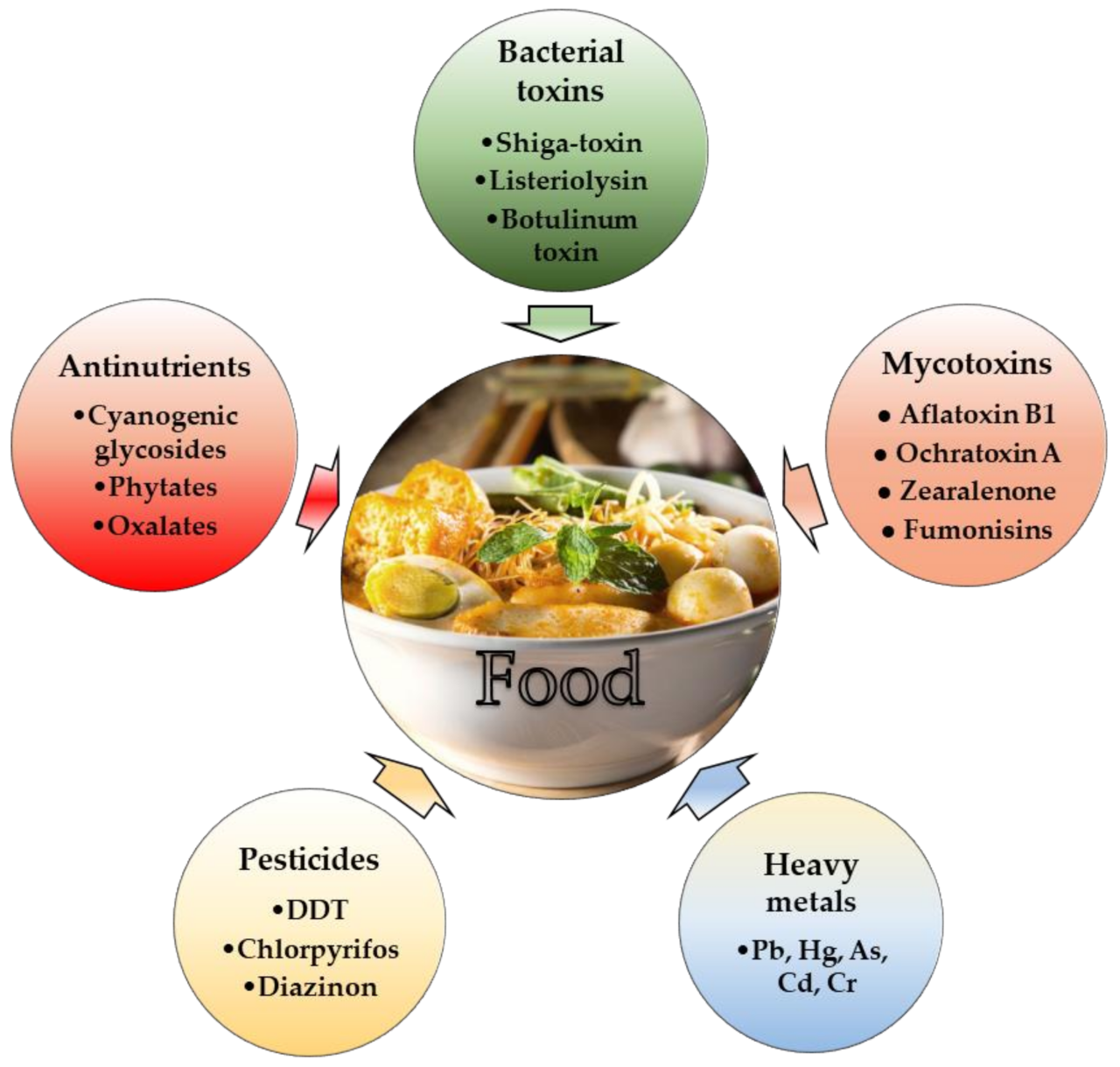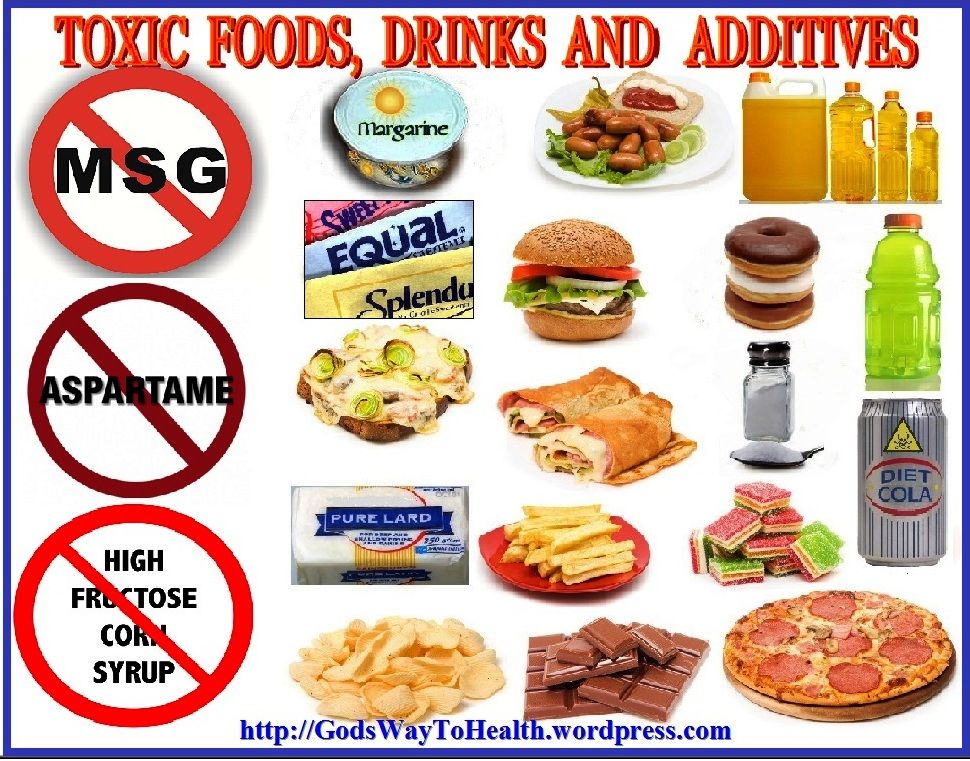
Unhealthy Ingredients in Processed Foods (Beyond Oil)
Unhealthy ingredients in processed foods other than edible oil are a sneaky threat to our well-being. We all know about the dangers of excessive oil, but what about the hidden sugars, artificial colors, and preservatives lurking in our favorite packaged snacks and meals? This post dives deep into the world of processed food additives, revealing the surprising ingredients that could be silently sabotaging your health.
Get ready to become a more informed consumer!
From the seemingly harmless artificial sweeteners in your morning yogurt to the preservatives extending the shelf life of your lunch meat, we’ll explore the common culprits and their potential long-term effects. We’ll look at the science behind why these ingredients are used, and most importantly, how to make smarter choices at the grocery store. We’ll even uncover some surprising facts about the ingredients you might think are “healthy” but are actually far from it.
Added Sugars and Sweeteners in Processed Foods

Source: eatthis.com
The pervasive presence of added sugars and sweeteners in processed foods is a significant contributor to various health problems in modern society. Understanding the types of sugars used, their impact on our bodies, and the prevalence of these ingredients in everyday products is crucial for making informed dietary choices. This section will delve into the specifics of added sugars and sweeteners, highlighting their effects and providing examples to illustrate their widespread use.
Types of Added Sugars and Their Health Impacts
Processed foods often contain a variety of added sugars, each with its own characteristics and potential health consequences. These include sucrose (table sugar), high-fructose corn syrup (HFCS), glucose, fructose, dextrose, maltose, and various other sugar alcohols and syrups. Excessive consumption of added sugars is linked to weight gain, type 2 diabetes, heart disease, and tooth decay. The body processes different sugars at varying rates, and some, like fructose, are metabolized primarily by the liver, potentially contributing to increased fat storage.
The impact of added sugars isn’t solely about calorie intake; it also disrupts metabolic processes and contributes to chronic inflammation.
Examples of Processed Foods High in Added Sugars
Many processed foods contain significant amounts of added sugars, often hidden within ingredient lists. Here are some examples categorized by food type:
| Food Category | Examples | Typical Sugar Sources | Health Concerns |
|---|---|---|---|
| Baked Goods | Cakes, cookies, pastries, muffins, donuts | Sucrose, HFCS, glucose, fructose | Weight gain, type 2 diabetes, cardiovascular disease |
| Beverages | Soda, sweetened juices, energy drinks, sports drinks, flavored coffees/teas | HFCS, sucrose, glucose, fructose, artificial sweeteners | Weight gain, type 2 diabetes, tooth decay, dehydration |
| Snacks | Candy, granola bars, breakfast cereals, yogurt (many varieties), ice cream | Sucrose, HFCS, glucose, fructose, dextrose, maltose | Weight gain, type 2 diabetes, tooth decay |
| Sauces and Condiments | Ketchup, BBQ sauce, salad dressings, flavored yogurts | Sucrose, HFCS, high fructose corn syrup | Increased calorie intake, potential contribution to chronic diseases |
Artificial Sweeteners vs. Natural Sugars: A Comparison
Artificial sweeteners, such as aspartame, saccharin, sucralose, and stevia, are often used as sugar substitutes in processed foods and beverages. While they provide sweetness without the same caloric content as sugar, their long-term health effects are still under investigation. Some studies suggest potential links between certain artificial sweeteners and metabolic changes, though the evidence is not conclusive. Natural sugars, like those found in fruits, contain vitamins, minerals, and fiber, which offer nutritional benefits absent in refined sugars and artificial sweeteners.
However, even natural sugars should be consumed in moderation to avoid excessive calorie intake. The ideal approach involves minimizing added sugars of all types and focusing on whole, unprocessed foods.
Sugar Content Comparison of Popular Processed Foods
The following table compares the sugar content (in grams) of various popular processed food items. Note that these values can vary depending on brand and serving size. Always check the nutrition label for specific information.
| Food Item | Serving Size | Sugar Content (grams) | Approximate Teaspoons of Sugar |
|---|---|---|---|
| Can of Soda (12 oz) | 12 oz | 39 | 9.75 |
| Granola Bar (1 bar) | 1 bar (approx 40g) | 12 | 3 |
| Yogurt (single serving) | 1 cup (240ml) | 25 | 6.25 |
| Fruit Juice (1 cup) | 8oz (240ml) | 22 | 5.5 |
Artificial Colors and Flavors in Processed Foods: Unhealthy Ingredients In Processed Foods Other Than Edible Oil
The vibrant hues and enticing aromas of many processed foods are often thanks to artificial colors and flavors. While these additives enhance the visual appeal and taste, raising concerns about their potential long-term health effects is crucial. This exploration delves into the common artificial additives, their potential risks, and the comparisons with their natural counterparts.
Common Artificial Colors and Flavors and Their Potential Health Risks, Unhealthy ingredients in processed foods other than edible oil
Several artificial colors and flavors dominate the processed food industry. Artificial colors, such as Yellow 5 (tartrazine), Yellow 6 (sunset yellow), Red 40 (Allura Red AC), Blue 1 (brilliant blue FCF), and Red 3 (erythrosine), are frequently used to create visually appealing products. Artificial flavors are often complex mixtures of various chemical compounds designed to mimic natural tastes.
Some studies suggest a potential link between these artificial additives and certain health problems, including hyperactivity in children, allergic reactions, and even cancer in some cases, although more research is needed to establish definitive causal relationships. The mechanisms through which these potential adverse effects might occur are complex and not fully understood, but some theories involve interference with normal metabolic processes or immune system responses.
Long-Term Effects of High Consumption of Artificial Colors and Flavors
Consuming a diet consistently high in artificial colors and flavors may lead to cumulative effects over time. While the immediate impact might be subtle, chronic exposure could potentially contribute to various health issues. For example, some research suggests a correlation between regular consumption of artificial colors and an increased risk of certain types of cancer, although this remains a topic of ongoing debate and further research is needed to establish clear cause-and-effect relationships.
Similarly, the long-term effects on the gut microbiome and overall immune function are still under investigation. It’s important to remember that these potential risks are often associated with high consumption levels, and moderation is key.
Natural Versus Artificial Colorings in Processed Foods
Many processed food categories utilize both natural and artificial colorings. For example, candy and soda often employ artificial colors for their bright, intense hues, while products like yogurt and fruit juices may utilize natural colorings derived from fruits and vegetables (like beetroot for red, or turmeric for yellow). The choice between natural and artificial colorings often comes down to cost, stability, and the desired intensity of color.
Natural colorings are generally more expensive and less stable than artificial ones, leading to a preference for artificial colors in many mass-produced items. However, the growing consumer demand for cleaner labels and more natural ingredients is pushing manufacturers to explore and adopt more natural options.
Processed Foods High in Artificial Colors and Flavors
Many processed foods are known to contain high levels of artificial colors and flavors. It is important to carefully read food labels to understand the ingredients.
- Candy
- Soda
- Snack foods (chips, crackers)
- Processed meats
- Breakfast cereals
- Frozen desserts
- Fruit snacks
- Some baked goods
Preservatives and Stabilizers in Processed Foods
Processed foods often have a longer shelf life than their unprocessed counterparts, thanks to the addition of preservatives and stabilizers. These ingredients play a crucial role in maintaining the food’s quality, texture, and safety during storage and transportation, preventing spoilage and extending its usability. However, understanding the types used and their potential impact on our health is essential for making informed choices.
The Role of Preservatives and Stabilizers in Extending Shelf Life
Preservatives inhibit the growth of microorganisms like bacteria, yeasts, and molds that cause food spoilage. They achieve this through various mechanisms, such as interfering with microbial enzyme activity or altering the food’s environment to make it less hospitable to microbial growth. Stabilizers, on the other hand, maintain the physical properties of the food, preventing changes in texture, consistency, and appearance.
They can prevent separation of ingredients, maintain emulsion stability, or prevent crystallization. The combined effect of preservatives and stabilizers ensures that the food remains safe and palatable for an extended period.
So many processed foods are packed with nasties beyond just the oil – think added sugars, artificial sweeteners, and excessive salt. These contribute to inflammation and overall poor health, potentially increasing the risk of conditions like dementia. It’s fascinating to learn that research, like this study on whether an eye test can detect dementia risk in older adults can eye test detect dementia risk in older adults , is ongoing.
Understanding these links helps us make better food choices to potentially mitigate future health problems, starting with cutting back on those processed food additives.
Types of Preservatives and Their Potential Health Implications
A wide range of preservatives are used in processed foods. Some common examples include:
- Sodium benzoate: This inhibits the growth of yeast and bacteria. While generally considered safe at approved levels, some studies suggest potential links to hyperactivity in children, though this remains a subject of ongoing research and debate.
- Potassium sorbate: Similar to sodium benzoate, potassium sorbate is effective against molds and yeasts. It is generally recognized as safe by regulatory bodies.
- Nitrites and nitrates: These are used primarily in cured meats to prevent botulism and maintain color. However, they can react with amines in the body to form nitrosamines, some of which are carcinogenic. The amount of nitrosamine formation depends on various factors, including cooking methods and the presence of antioxidants.
- Sulfur dioxide and sulfites: These are used in dried fruits, wine, and other foods to prevent browning and microbial growth. They can trigger allergic reactions in some individuals, particularly those with asthma.
It’s important to note that the safety of preservatives is generally assessed by regulatory agencies like the FDA (in the US) and EFSA (in Europe) based on extensive studies. These agencies set acceptable daily intake (ADI) levels, which represent the amount of a preservative that can be consumed daily without posing significant health risks.
Types of Stabilizers and Their Potential Health Implications
Stabilizers are added to maintain the desired texture and consistency of processed foods. Examples include:
- Guar gum: A natural polysaccharide derived from guar beans, used as a thickener and stabilizer in various products. Generally considered safe.
- Xanthan gum: Another natural polysaccharide, produced by bacterial fermentation, used to improve texture and stability in sauces, dressings, and baked goods. Generally considered safe.
- Carrageenan: Extracted from red seaweed, used as a thickener and stabilizer. Some studies have raised concerns about potential digestive issues, although the scientific consensus remains inconclusive.
- Pectin: A natural polysaccharide found in fruits, used as a gelling agent and stabilizer in jams, jellies, and other products. Generally considered safe.
Like preservatives, the safety of stabilizers is generally evaluated by regulatory agencies. However, individual sensitivities can vary, and some individuals might experience digestive discomfort with certain stabilizers.
Examples of Processed Foods Relying Heavily on Preservatives and Stabilizers
Many processed foods incorporate significant amounts of preservatives and stabilizers to extend shelf life and maintain quality.
- Processed meats (e.g., bacon, sausages, ham): These often contain nitrites and nitrates to prevent botulism and maintain color, along with other preservatives and stabilizers to maintain texture and prevent spoilage.
- Canned foods: These rely on heat sterilization to eliminate microorganisms, but preservatives might still be added to further enhance shelf stability. Stabilizers can also be used to maintain the texture of the food.
- Baked goods (e.g., bread, cakes, cookies): Preservatives can help extend the shelf life and prevent mold growth. Stabilizers can contribute to maintaining the desired texture and prevent staling.
- Salad dressings and sauces: Stabilizers are crucial for maintaining emulsion stability and preventing separation of oil and water. Preservatives help prevent microbial growth.
The specific preservatives and stabilizers used, and their concentrations, will vary depending on the food product and its manufacturing process. Checking food labels carefully allows consumers to make informed decisions about the foods they consume.
Refined Grains and Their Impact on Health
Refined grains are a staple in many modern diets, often appearing in processed foods without us even realizing it. However, the process of refining grains significantly alters their nutritional profile, leading to potential negative health consequences. Understanding this process and its effects is crucial for making informed food choices.The process of refining grains involves removing the bran and germ layers, leaving only the endosperm.
The bran layer is rich in fiber, vitamins, and minerals, while the germ contains healthy fats and other nutrients. Removing these layers significantly reduces the nutritional value of the grain, leaving behind primarily carbohydrates. This process increases shelf life and improves the texture and appearance of the grain, making it more appealing to manufacturers and consumers. However, this comes at a cost to our health.
Examples of Processed Foods Containing Refined Grains
Many processed foods rely heavily on refined grains. Think of white bread, white rice, pastries, crackers, most breakfast cereals, and many pasta products. These foods often lack the fiber and essential nutrients found in their whole-grain counterparts, contributing to a diet low in vital micronutrients. The ubiquitous nature of these foods in our supermarkets and restaurants makes it easy to unknowingly consume a high quantity of refined grains.
Glycemic Index of Refined Grains Versus Whole Grains
Refined grains have a higher glycemic index (GI) than whole grains. The GI measures how quickly a food raises blood sugar levels. Foods with a high GI cause a rapid spike in blood sugar, followed by a subsequent crash, leading to increased hunger and potential long-term health problems like type 2 diabetes and weight gain. Whole grains, due to their higher fiber content, are digested more slowly, resulting in a gentler and more sustained rise in blood sugar.
For example, white bread has a much higher GI than whole-wheat bread. This difference highlights the importance of choosing whole grains whenever possible.
Nutritional Comparison: Whole Grains vs. Refined Grains
| Nutrient | Whole Wheat | White Wheat | Whole Grain Brown Rice | White Rice |
|---|---|---|---|---|
| Fiber (grams per cup) | 12.9 | 2.7 | 3.5 | 0.6 |
| Vitamin B6 (mg per cup) | 0.3 | 0.1 | 0.3 | 0.1 |
| Iron (mg per cup) | 3.0 | 0.8 | 1.8 | 0.2 |
| Magnesium (mg per cup) | 118 | 26 | 100 | 17 |
*Note: Nutritional values can vary depending on the specific product and serving size. These values are approximate and serve as a general comparison.*
Excessive Sodium in Processed Foods

Source: mdpi-res.com
We’ve already explored the detrimental effects of added sugars, artificial ingredients, and refined grains in processed foods. Now let’s turn our attention to another silent culprit lurking in many packaged items: excessive sodium. While sodium is essential for bodily functions, consuming too much can have severe consequences for our health, primarily impacting our cardiovascular system.Excessive sodium intake is strongly linked to high blood pressure (hypertension), a major risk factor for heart disease, stroke, and kidney failure.
The body retains excess water when sodium levels are high, increasing the volume of blood circulating through the vessels. This increased volume puts extra strain on the heart and blood vessels, leading to higher blood pressure. Over time, this constant pressure damages the arteries, increasing the risk of plaque buildup (atherosclerosis), ultimately leading to heart attacks and strokes.
Health Consequences of High Sodium Intake
High blood pressure, often a silent killer, is the most prominent consequence of excessive sodium consumption. This condition increases the workload on the heart, leading to an enlarged heart (cardiomegaly) and eventually heart failure. Furthermore, high blood pressure damages the delicate blood vessels in the kidneys, potentially leading to chronic kidney disease. The damage isn’t limited to the cardiovascular system; high sodium intake is also associated with increased risk of osteoporosis and stomach cancer.
Imagine the arteries, usually flexible and elastic, becoming stiff and narrow like old garden hoses, restricting blood flow and creating pressure points. The heart has to work harder to pump blood through these constricted pathways, ultimately weakening and enlarging over time.
Examples of High-Sodium Processed Foods
Many processed foods contain surprisingly high levels of sodium, often exceeding the recommended daily intake in a single serving.Let’s categorize some common culprits:
- Canned Soups: Many canned soups, especially cream-based varieties, are loaded with sodium. A single serving can easily contain more than half the recommended daily intake.
- Processed Meats: Deli meats, bacon, sausage, and hot dogs are notorious for their high sodium content. The curing and preservation processes often involve substantial amounts of salt.
- Frozen Meals: Convenience is often at the cost of health. Many frozen dinners and entrees are high in sodium to enhance flavor and preservation.
- Bread and Baked Goods: Many breads, crackers, and baked snacks contain significant amounts of sodium, often added as a preservative or flavor enhancer.
- Snack Foods: Potato chips, pretzels, and other salty snacks are major contributors to excessive sodium intake. These items are often engineered for maximum saltiness to stimulate appetite.
Sodium Level Comparison in Similar Processed Foods
Comparing sodium content across different brands of similar processed foods often reveals significant variations. For example, a comparison of several brands of canned tomato soup might show one brand containing 700mg of sodium per serving, while another contains 1000mg. Similarly, different brands of frozen pizzas can vary widely in their sodium content, with some exceeding 1500mg per serving. Always check the nutrition labels carefully and opt for lower-sodium options whenever possible.
These differences highlight the importance of comparing labels and choosing wisely.
Visual Representation of Excessive Sodium’s Impact
Imagine your body’s blood vessels as a network of roads. With excessive sodium, these roads become clogged with excess fluid, making it harder for blood to flow smoothly. The heart, acting as the engine, has to work harder to pump blood through these congested pathways. Over time, the constant pressure damages the roads, leading to blockages (plaque buildup) and eventually causing breakdowns (heart attacks or strokes).
The kidneys, responsible for filtering waste, also struggle under this strain, potentially leading to damage and dysfunction. The entire system is under constant stress, a silent war waged by excess sodium.
Trans Fats and Partially Hydrogenated Oils

Source: pinimg.com
Let’s talk about trans fats, a sneaky ingredient often hiding in plain sight in processed foods. They’re not naturally occurring; instead, they’re created through a process called partial hydrogenation, and understanding this process is key to understanding the health risks.Partial hydrogenation is a chemical process used to solidify liquid vegetable oils, extending their shelf life and improving their texture for things like baking and frying.
During this process, hydrogen atoms are added to unsaturated fatty acids in the oil. This changes the structure of the fatty acid molecules, creating both saturated fats and, unfortunately, trans fats. These trans fats are particularly problematic because they’re similar in structure to saturated fats, but they have even more negative impacts on our health.
The Negative Health Effects of Trans Fats
Trans fats have been linked to numerous health problems. They raise levels of “bad” LDL cholesterol and lower levels of “good” HDL cholesterol, significantly increasing the risk of heart disease. They’ve also been associated with increased risk of stroke, type 2 diabetes, and certain types of cancer. The detrimental effects of trans fats are well-documented and have led to widespread efforts to limit their use in food production.
The body struggles to metabolize trans fats efficiently, leading to their accumulation in the bloodstream and tissues.
Processed Foods Containing Trans Fats
Many processed foods once commonly contained trans fats, primarily due to the use of partially hydrogenated oils (PHOs). While regulations have significantly reduced the use of PHOs in many countries, it’s still crucial to read food labels carefully. Foods that might still contain trans fats, albeit in smaller amounts than before, include some commercially baked goods (crackers, cookies, pastries), microwave popcorn, certain fried foods (especially those made with partially hydrogenated vegetable oil), and some types of margarine.
Always check the ingredient list for “partially hydrogenated oil” or “trans fat.” Even if the label states “0g trans fat,” it may contain less than 0.5 grams per serving, which is allowed to be rounded down to zero.
Strategies for Reducing Trans Fat Consumption
It’s vital to actively reduce your intake of trans fats to protect your health. Here are some key strategies:
The following strategies are designed to minimize your exposure to trans fats and promote a healthier diet:
- Read food labels meticulously: Pay close attention to the ingredient list. “Partially hydrogenated oil” is a clear indicator of trans fat presence. Even small amounts can add up.
- Choose foods with “0g trans fat”: While this doesn’t guarantee complete absence (remember the rounding rule), it’s a safer bet than products listing trans fats.
- Opt for foods made with healthier oils: Look for products made with olive oil, canola oil, or other unsaturated fats.
- Cook more at home: This gives you greater control over the ingredients and oils used in your cooking.
- Limit consumption of commercially baked goods and fried foods: These are common sources of trans fats.
- Choose margarine wisely: Some margarines are trans fat-free, while others still contain them. Check the label carefully.
Concluding Remarks
So, there you have it – a glimpse into the often-hidden world of unhealthy ingredients in processed foods. While completely avoiding processed foods might be unrealistic, arming yourself with knowledge is the first step towards making healthier choices. By understanding the impact of added sugars, artificial flavors, preservatives, refined grains, and excessive sodium, you can navigate the grocery aisles with confidence, making swaps that benefit your body and your well-being.
Remember, small changes can make a big difference!
Question & Answer Hub
What are some easy swaps to reduce my intake of unhealthy processed food ingredients?
Swap sugary drinks for water or unsweetened tea. Choose whole grain bread over white bread. Opt for fresh fruits and vegetables over processed snacks. Read labels carefully and compare sodium and sugar content between different brands.
Are all artificial sweeteners equally bad for you?
The research on artificial sweeteners is ongoing and complex. While some studies suggest potential negative health effects, others show little to no harm. It’s best to limit your intake of all artificial sweeteners and focus on reducing your overall sugar consumption.
How can I tell if a food is high in preservatives?
Check the ingredient list. A long list with many unfamiliar chemical-sounding names often indicates a high preservative content. Look for products with simpler ingredient lists and prioritize whole, unprocessed foods whenever possible.
